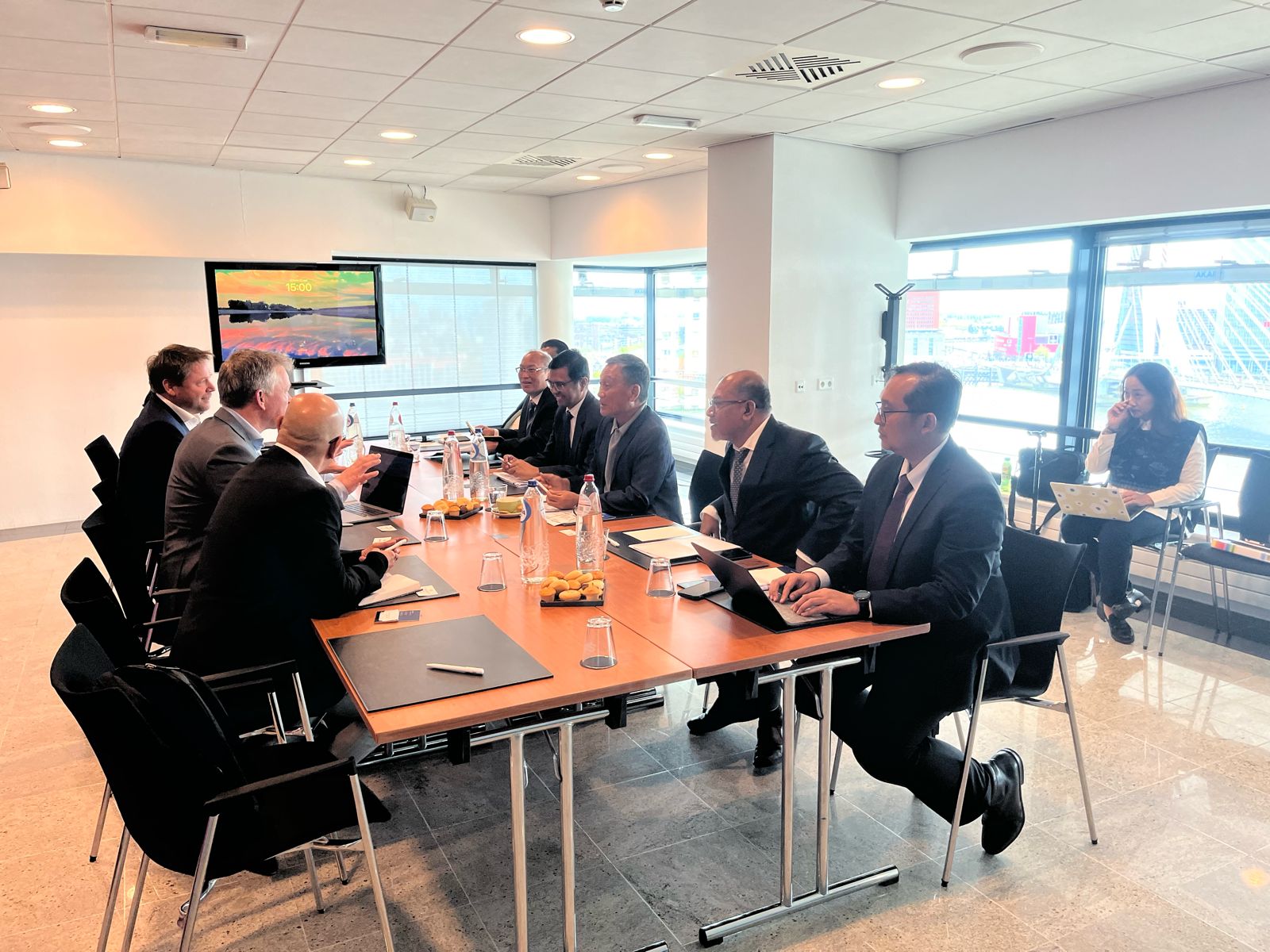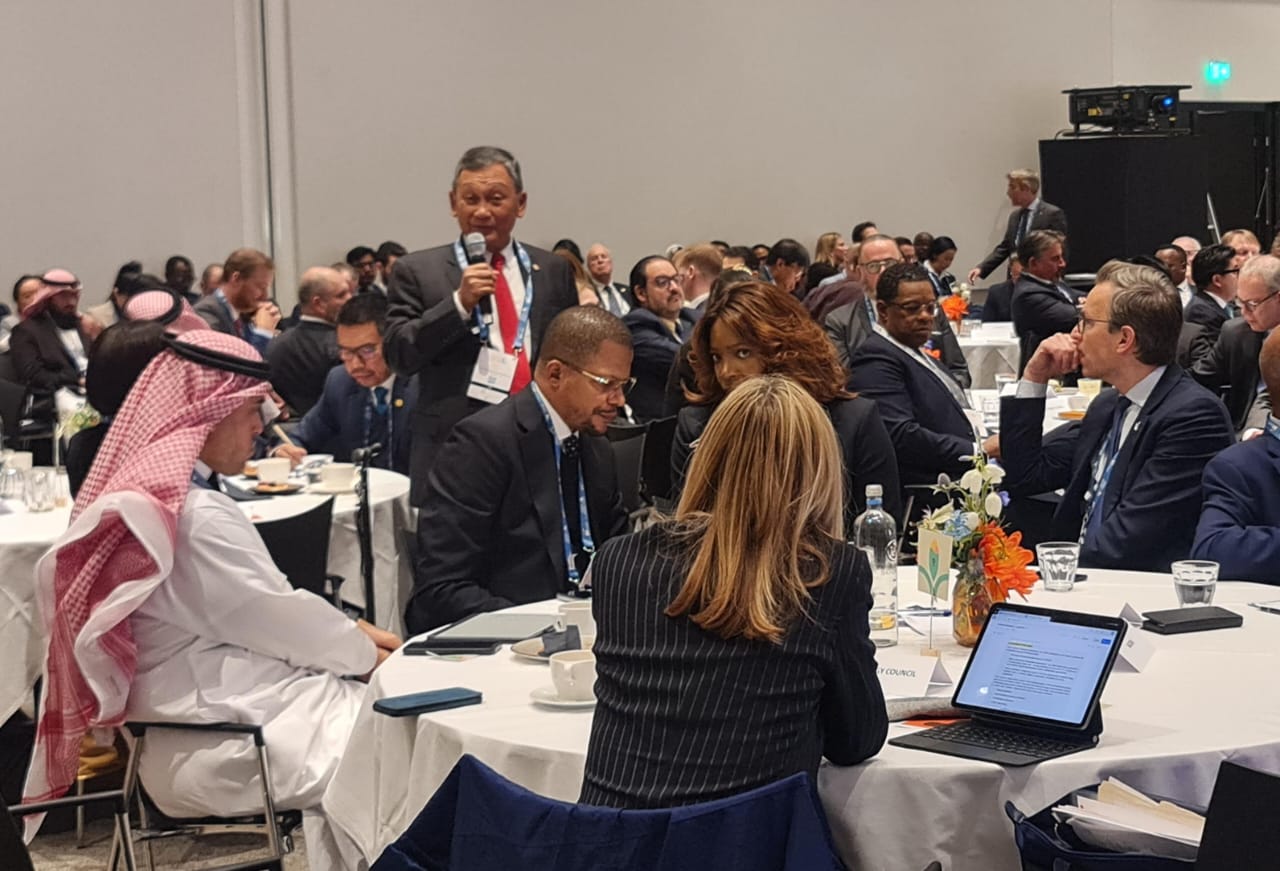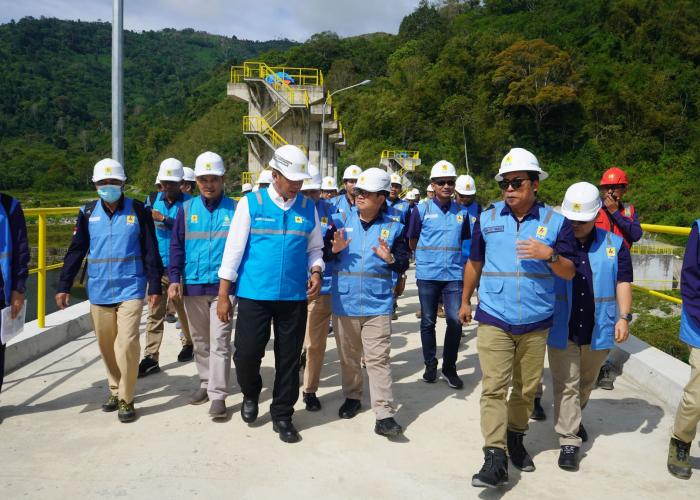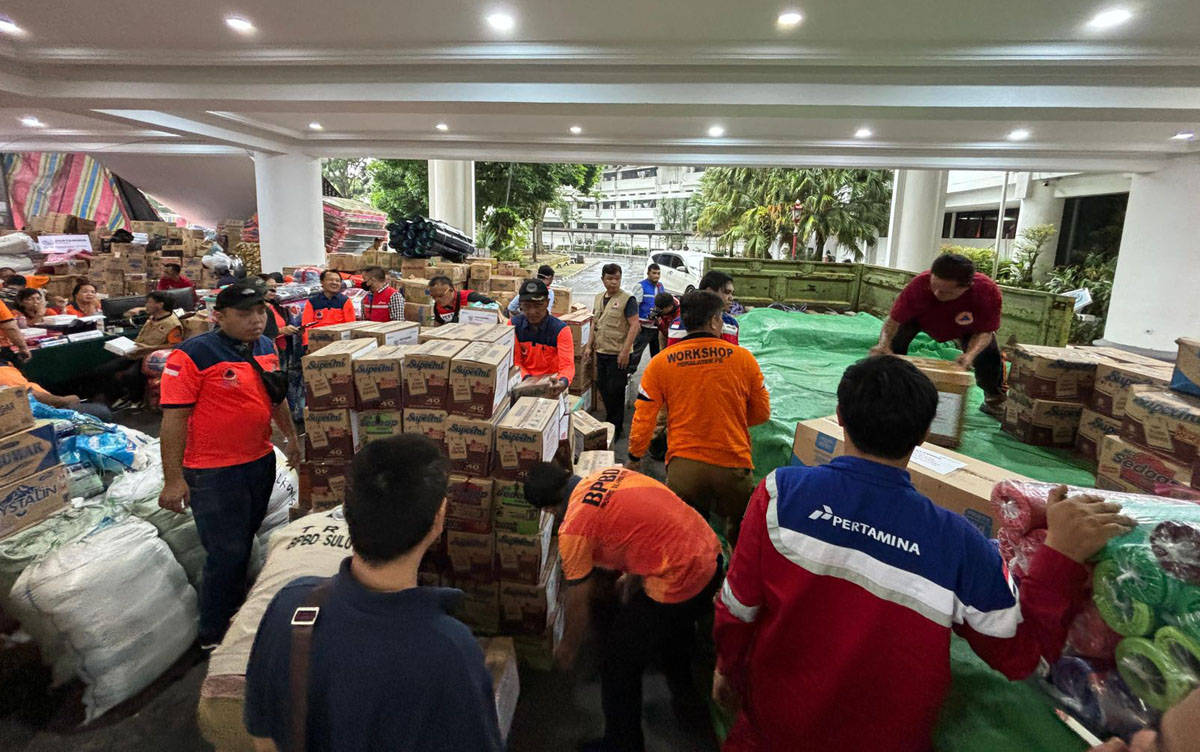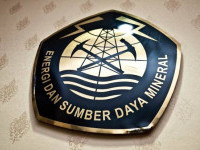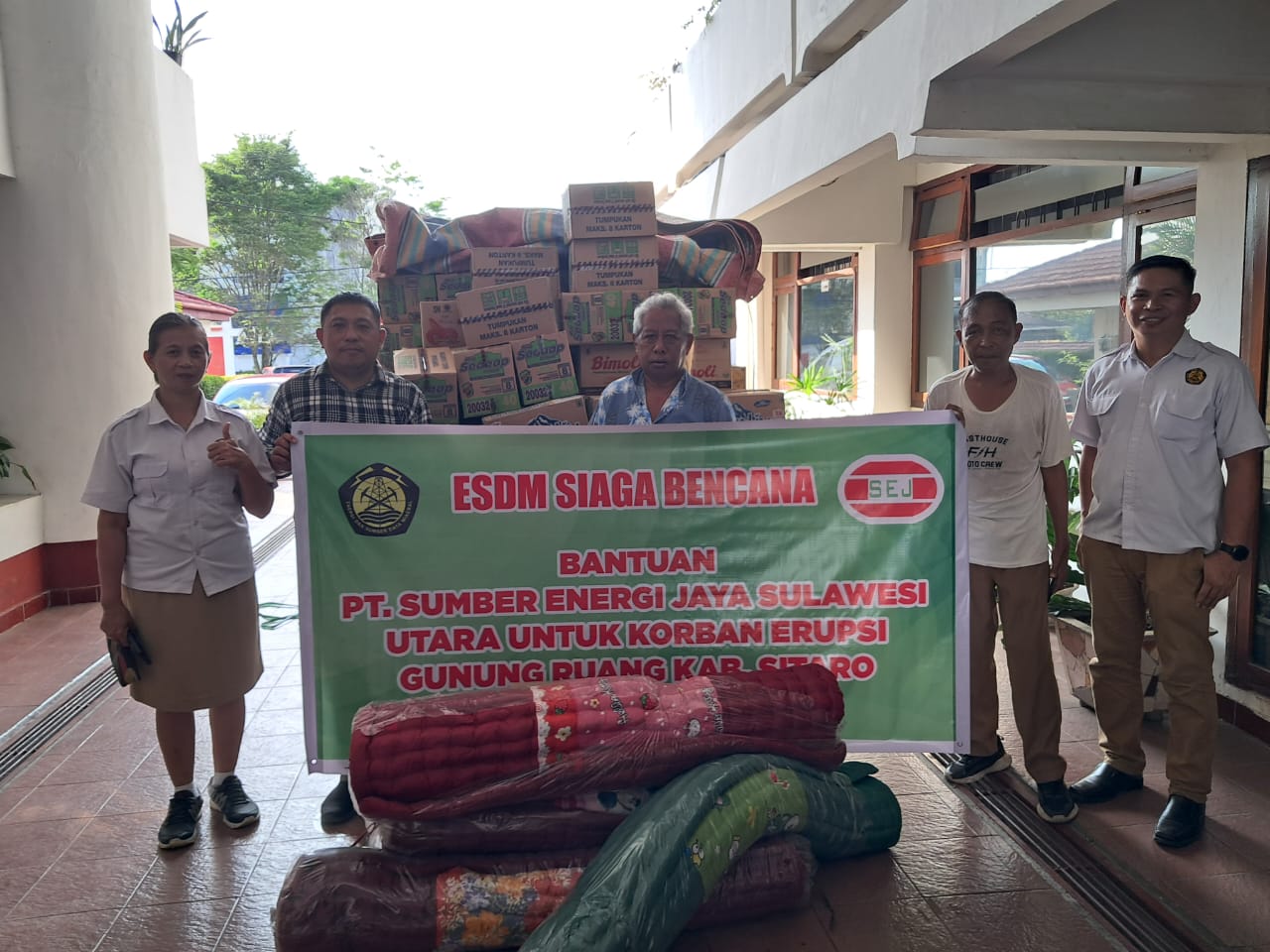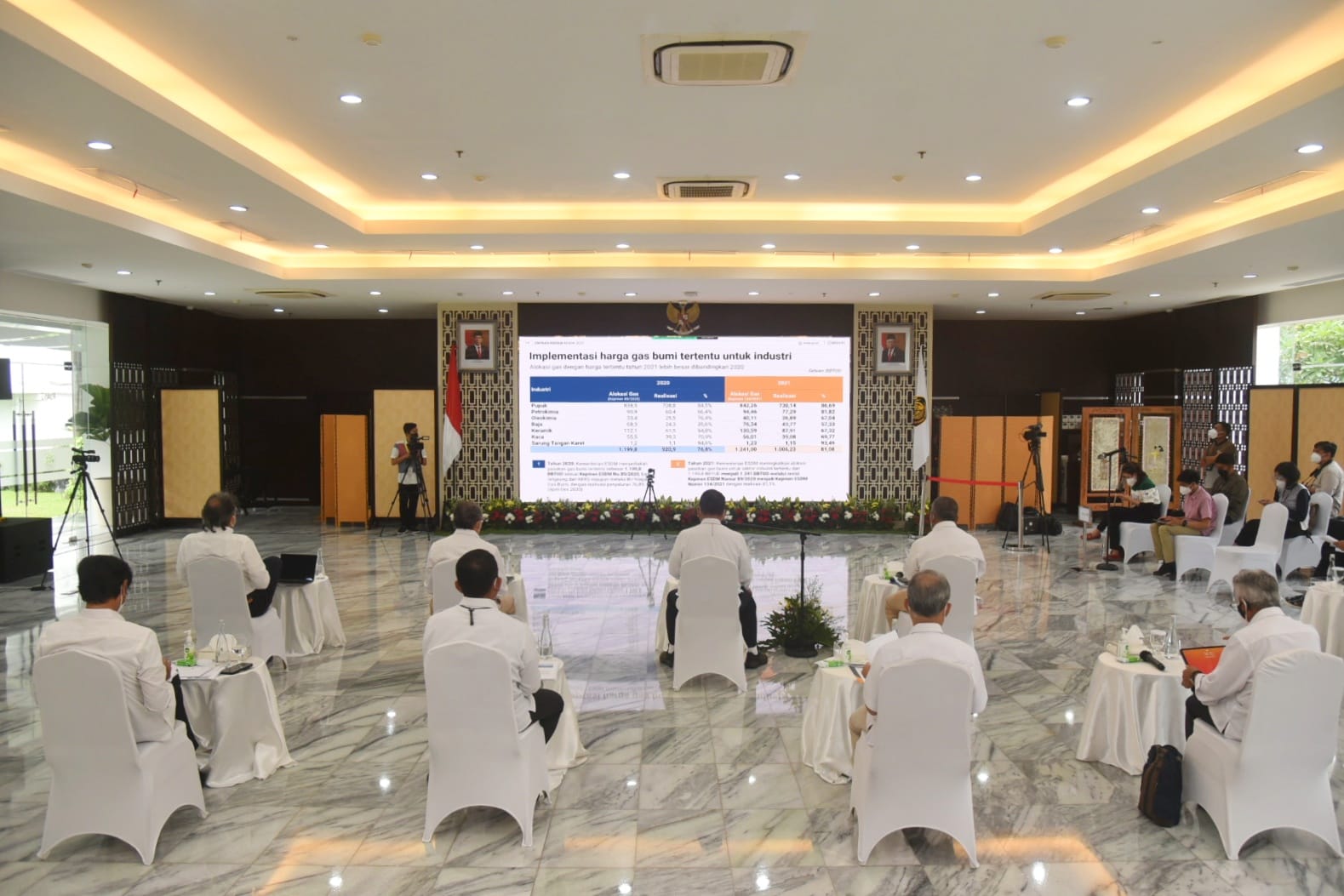
Non-Tax Revenues in 2021 Exceed Target, Says Energy Minister
MINISTRY OF ENERGY AND MINERAL RESOURCES
REPUBLIC OF INDONESIA
PRESS RELEASE
NUMBER: 21.Pers/04/SJI/2022
Date: 12 January 2022
Non-Tax Revenues in 2021 Exceed Target, Says Energy Minister
The Minister of Energy and Mineral Resources (EMR), Arifin Tasrif, on Wednesday (12/1) made a press statement on the performance of 2021 and work program for 2022 of the energy and mineral resources sector. The press statement revolved around several issues, including the increase in Non-Tax State Revenue (PNBP), the rise in domestic gas utilization, development of electric vehicle infrastructure, emissions reduction, the use of reclaimed mines, and mitigation of geological disasters.
The PNBP of the Ministry of EMR in 2021 reached 156% of the target. "The PNBP target of the EMR sector had been set at Rp121.2 trillion, while the realization reached Rp189.2 trillion," said Arifin. For 2022, the Ministry of EMR targets Rp132.2 trillion from non-tax revenue.
Meanwhile, the investment made in the EMR sector in 2021 touched USD28.2 billion, or 107% of the previous year's realization. The target for 2022 is USD32.6 billion.
Next, the Indonesian National Energy Council (DEN) has overseen the completion of 22 Provincial General Energy Plans (RUED) until the year 2021. Additionally, 1 province has applied for a registration number at the Ministry of Home Affairs, 7 provinces have included their RUED into the legislation formulation program (Propemperda), and 4 provinces have already had Draft Regional Regulation on RUED but did not have the budget for completing the drafts in 2021.
The Ministry of EMR also made other achievements in 2021, among others, the best State Administrators' Wealth Report (LHKPN) and E-LHKPN, best National Strategy for Prevention of Corruption presented by the Indonesian Corruption Eradication Commission (KPK), BMN Awards in two consecutive years, best geoportal, best Government Public Relations and media best social services, BKN Awards and the titles of Corruption-Free Area (WBK)/Clean and Serving Bureaucratic Area (WBMM).
The ministry also received an unqualified opinion for five consecutive years, Energy Management Award in Building and Industry Category from the ASEAN Energy Awards 2021, meritocracy award (Excellent), records management (Very Satisfactory), Full Compliance with Public Service Standards of the Indonesian Ombdusman, Quality Reporting of State Asset Management and Auction Award for Non-Execution Category (runner-up).
The performance and work program of each subsector are as follows:
Oil and Gas
In 2021, 66% of natural gas is used domestically. The industry sector absorbed the most gas at 27.69%. The total realized distribution of natural gas in 2021 is 5,684 billion british thermal units per day (BBTUD). "The absorption has been supported by the construction of natural gas distribution infrastructure and the implementation of a special gas price for industry," said Arifin.
Next, the One-Price fuel program has reached 331 locations, increasing by 78 locations out of the 76 targeted locations. Meanwhile, the year 2021 saw the addition of 127,000 House Connections (SR) so that a total of 799,000 households are connected to the grid. "We hope that the number of household gas connections will increase so that we can attain energy independence," said Arifin.
On the upstream side, oil lifting reached 660 mboepd out of the 705 mboepd target, while gas lifting hit 982 mboepd out of a target of 1,007 mboepd. For 2022, the target of oil lifting is set at 703 mboepd and gas lifting at 1036 mboepd.
To improve the national industry competitiveness, the government has made a breakthrough by setting the natural gas price of USD6 per MMBTU at plant gate for certain industries and rising the allocation of natural gas supply from 1,199.8 BBTUD to 1,241 BBTUD.
"The gas price setting will encourage the creation of multiplier effects. A competitive gas price will increase the efficiency of the national industry and attract foreign investment. It is a mission of the Ministry of EMR to develop industry and create new jobs," said Arifin.
Electricity
In 2021, the electricity consumption increased to 1,123 kWh per capita. The rise is inseparable from the growth in the installed power plant capacity by 74 gigawatts (GW).
In addition, the electrification ratio stood at 99.45% while the ratio of electrified villages at 99.62%. For 2022, the government is targeting both the electrification ratio and the ratio of electrified villages at 100%. "We can meet these targets by expanding electricity networks, constructing minigrids, supplying Power Distribution Equipment (APDAL), and providing support for installing new electricity connections for poor households," explained Arifin.
In terms of the battery electric vehicle program, the government continues to accelerate the development of charging infrastructure. Until 2021, as many as 267 public charging stations (SPKLU) have been installed at 224 locations and 266 battery swap stations (SPBKLU) at 265 locations. Meanwhile, 71 gasoline internal combustion engine motorcycles have been converted to electric motorcycles while 29 units are in completion.
New, Renewable Energy and Energy Conservation
The capacity of new, renewable energy power plants until 2021 clocked up at 11,152 MW. The additional capacity of renewables power plant comes from Poso Peaker hydropower plant of 260 MW, 3 geothermal power plants of 146.2 MW, Malea hydropower plant 90 MW, bioenergy power plants 16.5 MW, 18 micro hydropower plants 111.25 MW, and solar power systems 26.08 MW. For 2022, renewables power plant capacity has been set to grow to 11,791 MW. "These (new, renewable) energy sources must be utilized to reduce emissions," said Arifin.
The mandatory biodiesel program has continued to improve, too. Throughout 2021, the realized use of biodiesel was recorded at 9.3 million kiloliters, which translates into a saving of Rp66.54 trillion (USD2.66 billion) in foreign exchange. For 2022, biodiesel utilization is targeted to reach 10.1 million KL. "The mandatory biodiesel policy can reduce oil imports and save foreign exchange," said Arifin.
The efforts to reduce CO2 have also struck a positive note for the government in 2021, with a decrease of 69.5 million tons of CO2 out of the targeted 67 million tons of CO2. For 2022, the government has set a CO2 reduction target of 91 million tons. This is in line with the realized share of new, renewable energy in the energy mix of power generation which exceeded the target, reaching 13.5% out of the 12.9% target.
"Mitigation actions that contribute to large emission reductions include the implementation of new, renewable energy; energy efficiency applications, and the use of low-carbon fuel (natural gas)," said Arifin.
Mineral and Coal
In 2021, the realized domestic market obligation (DMO) of coal stood at 133 million tonnes from 614 million tonnes of production. This is equal to 98.24% of the targeted 625 million tonnes of production. For 2022, the Ministry of EMR will prioritize domestic demands with a DMO target of 165.7 million tonnes from production total of 663 million tonnes.
To support the mineral downstreaming program, as many as 21 smelters have been constructed until 2021. Another 7 smelters will start operation in 2022, adding the number of smelters to 28 units. "Smelters will encourage multiplier effects in the economy and people's welfare. For this reason, the government will continue to encourage the increase in mineral added-value program," said Arifin.
The Ministry of EMR also continues to oversee ex-mines reclamation. The realized reclamation in 2021 clocked up 8,539 hectares out of target 7,025 hectares, while the target for 2022 is set at 7,050 hectares.
Geology
The Ministry of EMR has continued to mitigate geological hazards through the development of early warning systems, emergency response, investigation, mapping, and dissemination. During 2021, there were 11 volcanic eruptions; 3 eruptions with pyroclastic flows, and 7 lava flows. Meanwhile, 60% of ground movements occurred on Java Island, with 5 locations experiencing severe damage.
To mitigate the eruption of Mount Semeru, the map of Mount Semeru disaster-prone area in the southern sector has been updated to reduce structural damage and loss of life. In addition, to assist with disaster management, the Tim ESDM Siaga Bencana (EMR Disaster Preparedness Team) has dispatched rescue, health, and logistics groups as well as heavy equipment which were donated by the stakeholders of the EMR sector. (IY)
Head of Bureau of Communication, Public Information Services, and Cooperation
Agung
Pribadi (08112213555)
Share This!

